Tomatoes are an excellent choice for Florida people to begin cultivating veggies. This hearty culinary staple will benefit from either lengthy or several growing seasons, depending on where you reside in the state. You’ll also gain information that you can use for the rest of your garden if you learn how to cultivate tomatoes from seed or young plants. In any case, you’ll be blown away by the sheer number of options available. Let’s check out a detailed guide to growing tomatoes in Florida.
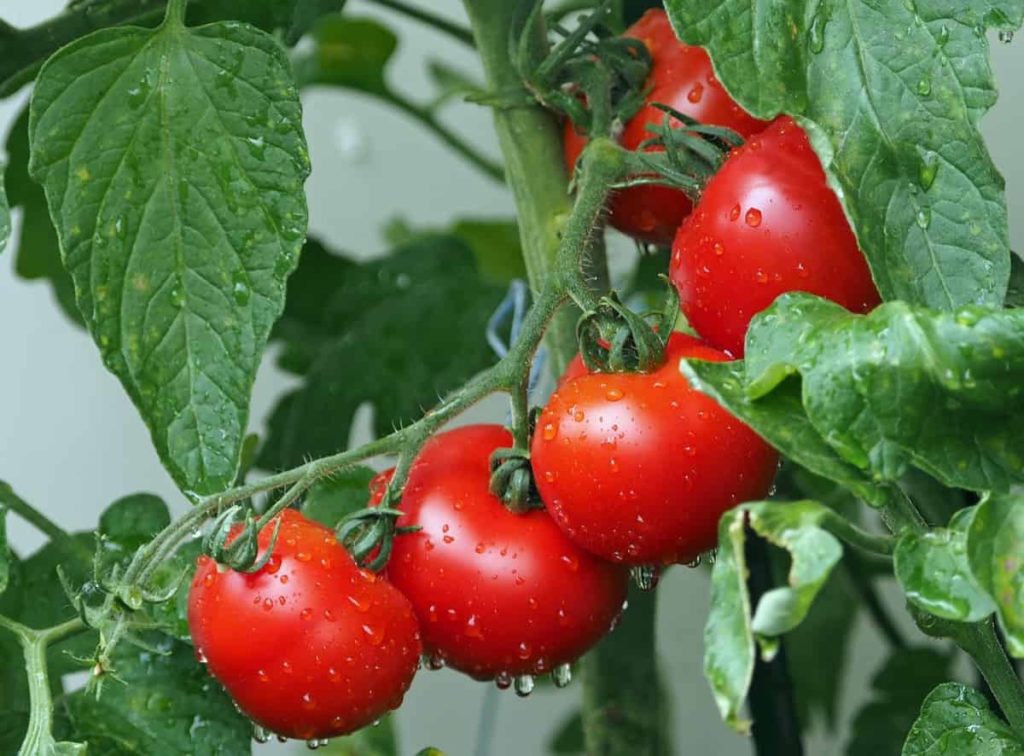
Tomatoes are among the most common crops grown in backyard gardens. They may be produced effectively in Florida using a variety of ways, including typical vegetable gardens, containers, hydroponic systems, and even hanging baskets, if you grasp a few essential aspects.
Guide to Growing Tomatoes in Florida
Choosing a type of garden
To grow tomatoes in pots in Florida
Choose a container that is large enough to keep the soil from drying up too rapidly. A simple and inexpensive solution is a five-gallon bucket with holes drilled in the bottom. Smaller-growing types should be planted in a well-drained, rich potting medium. To assist support the plants, use a tomato cage. Place the containers at a spot that receives at least six hours of direct sunlight, and water them regularly to avoid drying out.
Watering may be made much easier with a self-watering container. You may use a purchased potting mix or create your own for container gardening. To encourage deeper-rooted, it’s a good idea to put tomatoes somewhat deeper than they were in their original pots before planting the tomatoes.
To grow tomatoes in the backyard in Florida
Make sure your soil is tested. You’re looking for a pH range of 6.2 to 6.5 in your soil. Before planting your tomatoes, enrich the soil with organic ingredients like composted manure or peat moss. Now calculate how much room you have. Some tomato varieties referred to as indeterminate varieties, have a broad, spreading growth habit that needs trimming and assistance.
In case you miss this: The Best Fertilizer for Tomatoes in Pots
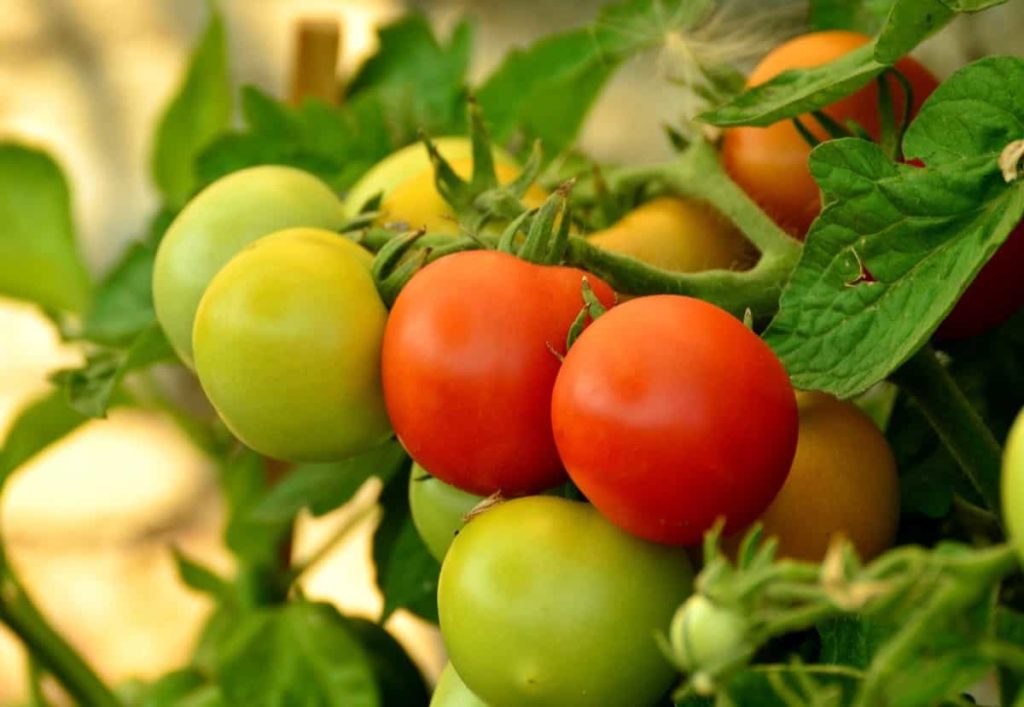
Some gardeners prefer indeterminate cultivars because they bear fruit over a longer period. If you’re short on space, choose a tomato variety, which grows in a more compact, bush-like shape but only produces one crop of tomatoes.
Different types of tomato varieties that grow best in Florida
For Central and South Florida
- Plum tomato: ‘BHN 685,’Daytona’, ‘Mariana,’ Monticello’, ‘Sunoma’, ‘Supremo’, ‘Tachi’
- Cherry tomato: ‘BHN 268’, ‘BHN 762’, ‘Camelia’, ‘Sakura’, ‘Shiren’, ‘Sweet Treats’.
- Heirloom tomato: ‘Amana Orange’, ‘Brandywine’, ‘Big Zebra’, ‘Cherokee Purple’, ‘Green Zebra’, ‘(Jaune) Flamme’, ‘Pruden’s Purple’, ‘Striped German’.
- Round tomatoes: ‘BHN 602’, ‘BHN 730’, ‘BHN 975’, ‘Camaro’, ‘Charger’, ‘Crista’, ‘Everglade’, ‘FL 47’, ‘FL 91’, ‘Grand Marshall’, ‘HM 1823’, ‘Phoenix’, ‘Raceway’, ‘Red Morning’, ‘Red Rave’, ‘Resolute’, ‘Rocky Top’, ‘Sanibel’, ‘Sebring’, ‘Skyway’, ‘Solar Fire’, ‘Soraya’, ‘Southern Ripe’, ‘SV 7631’, ‘Tasti-Lee’, ‘Volante’.
For North Florida
- Plum tomato: ‘BHN 685’, ‘Daytona’, ‘Mariana’, ‘Monticello’, ‘Picus’, ‘Sunoma’, ‘Tachi’.
- Grape tomato: ‘Amai’, ‘BHN 784’, ‘BHN 1022’, ‘Brixmore’, ‘Cupid’, ‘Green Grape’, ‘Jolly Girl’, ‘Smarty’, ‘Sundrop’, ‘Sweet Hearts’, ‘Tami G’.
- Cherry tomato: ‘BHN 268’, ‘BHN 762’, ‘Brown Cherry’, ‘Camelia’, ‘Gold Nugget’, ‘Shiren’, ‘Snow White’, ‘Sweet Treats’.
- Round tomato: ’Abraham Lincoln’, ‘Amelia’, ‘Aunt Ruby’s German Green’, ‘Bella Rosa’, ‘Big Rainbow’, ‘BHN 602’, ‘Black Krim’, ‘Camaro’, ‘Cherokee Purple’, ‘Crista’, ‘Everglade’, ‘Fletcher’, ‘FL 47’, ‘Grand Marshall’, ‘Homestead 24’, ‘Quincy’, ‘Red Morning’, ‘Red Rave’, ‘Resolute’, ‘Sebring’, ‘Skyway’, ‘Southern Ripe’, ‘SV 7631’, ‘Tasti-Lee’, ‘Volante’, ‘Zapotec’.
Choosing between seeds and seedlings
Tomatoes take a long time to ripen. It takes time for them to establish themselves. Starting a tomato crop from seedlings saves you the time of one month or two. Seedlings will be more resistant to weeds and tolerant of inconsistent hydration. Plant seeds in a potting mix with shelter from strong rain if you plan to grow from seeds instead of seedlings from a nursery.
In case you miss this: Tomato Planting Frequently Asked Questions (FAQs)
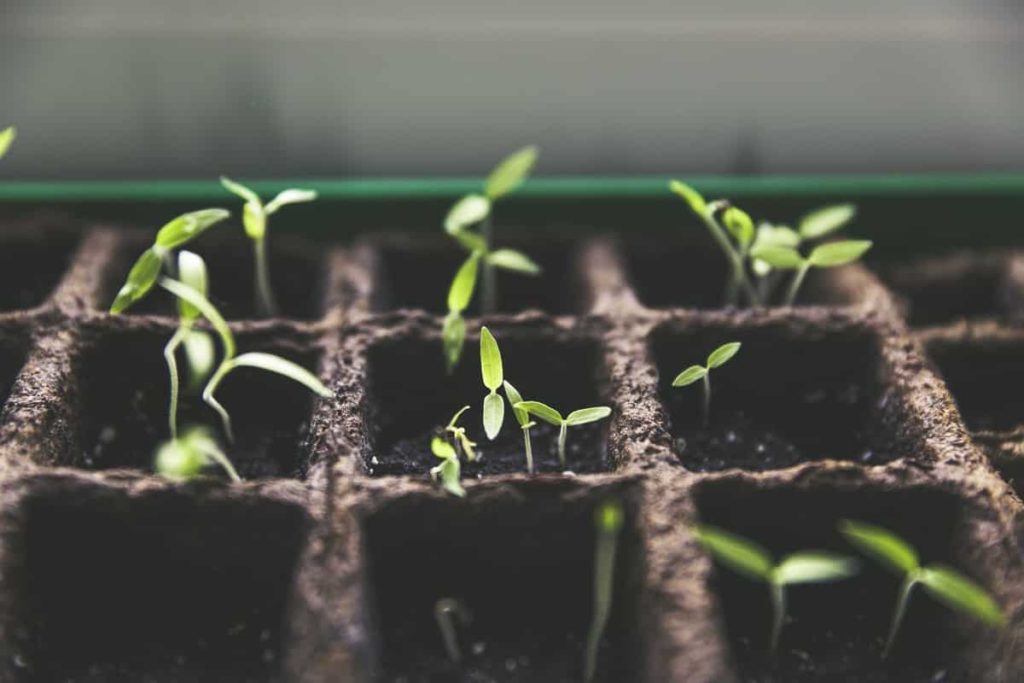
How much sun do tomatoes need in Florida?
Tomatoes require at least 4 to 6 hours of direct sunlight every day, so choose a sunny location to grow them. You may easily shift lightweight containers about the yard to face the sun if you’re using them. The more sunlight there is, the better. The Florida sun might be harsh at times, but your tomato plants want as much light as possible.
How much water do tomatoes need in Florida?
Florida is warmer than the rest of the United States. As a result, you must ensure that your tomato plants receive adequate watering. Both overwatering and a lack of water supply may hurt your tomatoes. As a result, you must keep your plants watered regularly. There are a variety of watering strategies you may use to efficiently water tomatoes.
Before watering your plants, make sure the soil surrounding them is dry. Push your finger about 2 inches into the dirt. If you see that they are dry, water them. On hot days, give mature tomato plants 3 gallons of water at a time. Watering tomato plants in the morning is the optimum time. However, if your tomatoes require extra water, water them twice before nightfall and never at night.
Staking of tomato plants
Tomato stems aren’t strong enough to support the weight of the fruits when they’re completely laden. As a result, they begin to sprawl and lay on the ground. As a result, less sunshine reaches the plant leaves. Furthermore, tomatoes are more vulnerable to soil-borne infections when they come into contact with the ground.
Staking your plants protects them from illness and ensures that they produce fresh, clean fruit. Determinate tomato plants don’t usually require any support, although they thrive better when they do. Indeterminate tomato plants, on the other hand, must be supported.
Mulching of Florida tomatoes
In Florida, the soil dries out rapidly due to the heat weather, despite providing thorough watering to the tomato plants. Mulching in this scenario helps to keep the soil wet for longer. Leaves, straw, newspapers, or any other organic material can be used to mulch tomato plants.
In case you miss this: Tomato Growing Tips, Ideas, Secrets, and Techniques
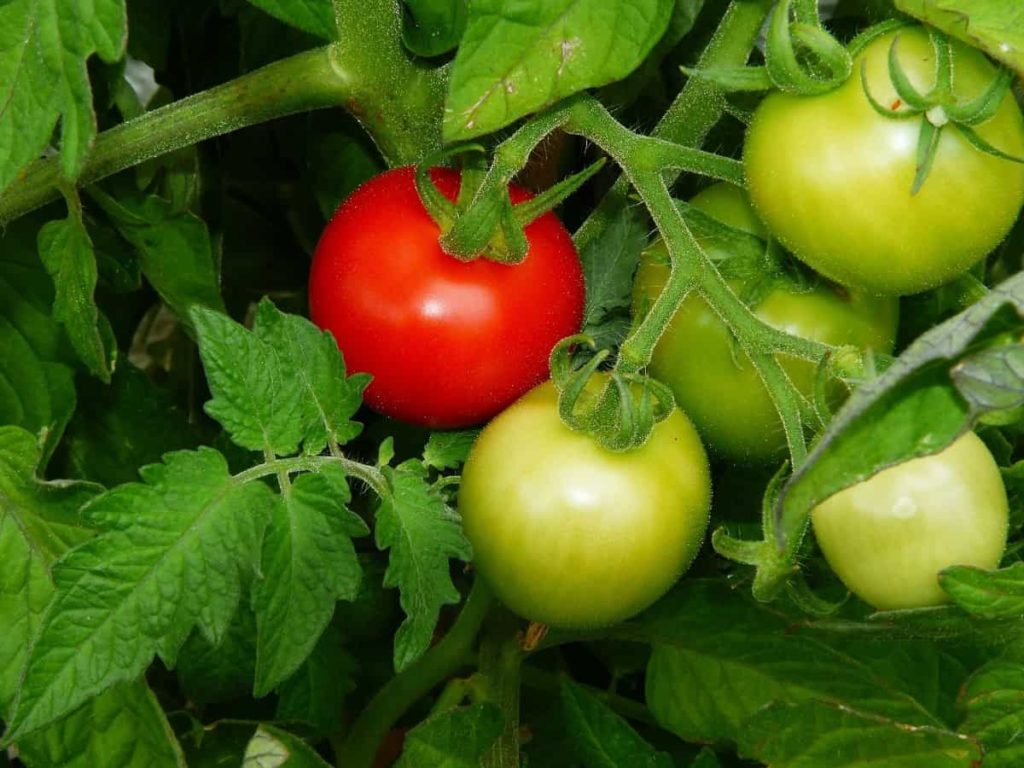
Pruning for Florida tomato plants
Pruning helps to keep plants clean, control fruit size, accelerate ripening, and prevent disease. Suckers that sprout from leaf axils are sometimes removed by gardeners. Pruned plants are less crowded, have better ventilation, and are less susceptible to disease. The disease is also prevented by removing lower leaves that contact the ground.
While eliminating suckers eventually means sacrificing fruit-bearing stems, a neater plant allows for tighter plant spacing down the row, resulting in a higher total yield. If chilly conditions threaten fall tomato yields, topping plants will hasten to ripen.
Size of tomatoes matters
Smaller tomatoes are often easier to cultivate than bigger tomatoes. Larger tomatoes require cooler temperatures to develop fruit than tiny tomatoes, however, many cherry and grape tomatoes may produce fruit well into the summer. Larger tomatoes also take longer to ripen and produce fewer fruits, putting them at a greater danger of being eaten by caterpillars, or rot.
What is “determinate” and “indeterminate” tomato labelling?
Specific tomato varieties are classified as “determinate” or “indeterminate” when you look at them. The majority of commercially cultivated types are determinate, which means they develop their fruit all at once rather than gradually, making them easy to harvest.
Because of their bushing instead of vining growth patterns, determinate types don’t require much trellising. Indeterminate cultivars are ideal for farmers or gardeners that desire a more progressive harvest over a longer period, especially if the crop is intended for local consumption. Many of the best-tasting kinds, including many heirlooms, are ambiguous.
Fertilizing your tomato plants
Tomatoes, like other plants, require particular nutrients to thrive, therefore fertilizing using a 6-8-8 or similar fertilizer can help your plants thrive. A liquid fertilizer solution or granular fertilizer, particularly in controlled-release form, can be used. Fertilize your plants at the time of planting and then regularly during the growing season.
In case you miss this: Homemade Fertilizer for Tomato – Manure, Compost

Can you grow tomatoes year-round in Florida?
Although tomatoes may be grown in Florida all year, you may not get a decent crop if you do them during the hot summer months. Summers are also more prevalent for bugs, rain, and illnesses, in addition to the heat.
Growing tomatoes in winter in Florida
Because of Florida’s mild environment, we can grow tomatoes in the late winter or early spring, while the rest of the country is still freezing. However, because tomatoes are a warm-weather crop, wait until the threat of frost has gone before planting them. Planting seedlings indoors and then transferring them outside once the earth warms up is a good way to gain a head start.
Plant tomatoes in lightweight pots instead, which will allow you to shift them to a safe position if a late frost or freeze threatens. It’s also crucial that you don’t take too much time to plant your tomatoes, since they need time to grow and grow fruit before the summer heat sets in. Large-fruited tomatoes can continue to blossom but not set fruit after average nighttime temperatures reach a particular degree.
Growing tomatoes in summer in Florida
Choose the best tomato type to grow in Florida throughout the summer. Summer-friendly tomatoes in Florida include Everglades, Sweet 100, and Heat Wave II. Summer brings with it obstacles such as strong rains and pests. In Florida, certain tomato types will grow in the summer, but they will grow more easily in the early fall and spring.
Small, dime-sized fruit are produced by these heat-tolerant tomatoes. Another reason this plant can endure our heat is because of this. When the temperature warms up and the rains come, tomatoes that yield bigger fruit are more prone to diseases.
Care for tomatoes in Florida during summer
Tomatoes, for the most part, are sensitive. They dislike being fussed with, particularly when they are moist. If at all possible, avoid handling your plants in the morning while the dew is still present. The Everglades tomato, Heatwave II, and Sweet 100 are more resistant than other tomatoes.
The everglades tomato prefers medium-watered soil that is neither too moist nor too dry. Even under less-than-ideal soil conditions, it will thrive. Makes sure your soil mixture has the following proportions in summer for Florida tomatoes: Worm Castings, 40 percent peat moss, 40 percent compost, 20 percent perlite, and also add Mykos which is a fungus.
Growing seasons for tomatoes according to the regions in Florida
North Florida growing season for tomatoes
Start planting your tomato seeds in January for the spring season, then care for them for 4-6 weeks until the final frost date. In February or March, one or two weeks after the last frost, transfer your tomato seedlings outside. You may start preparing your tomato seedlings for the fall season indoors or outdoors with suitable shade from June and transplant them later.
Central Florida growing season for tomatoes
Prepare tomato seeds inside in December for early summer tomatoes and care for them for 4-6 weeks until the final frost. After the latest frost date in January or early February, transplant tomato seedlings outside. Start plant tomato seedlings in August to early September for early winter tomatoes.
In case you miss this: Growing Roma Tomatoes In Pots – From Seeds At Home
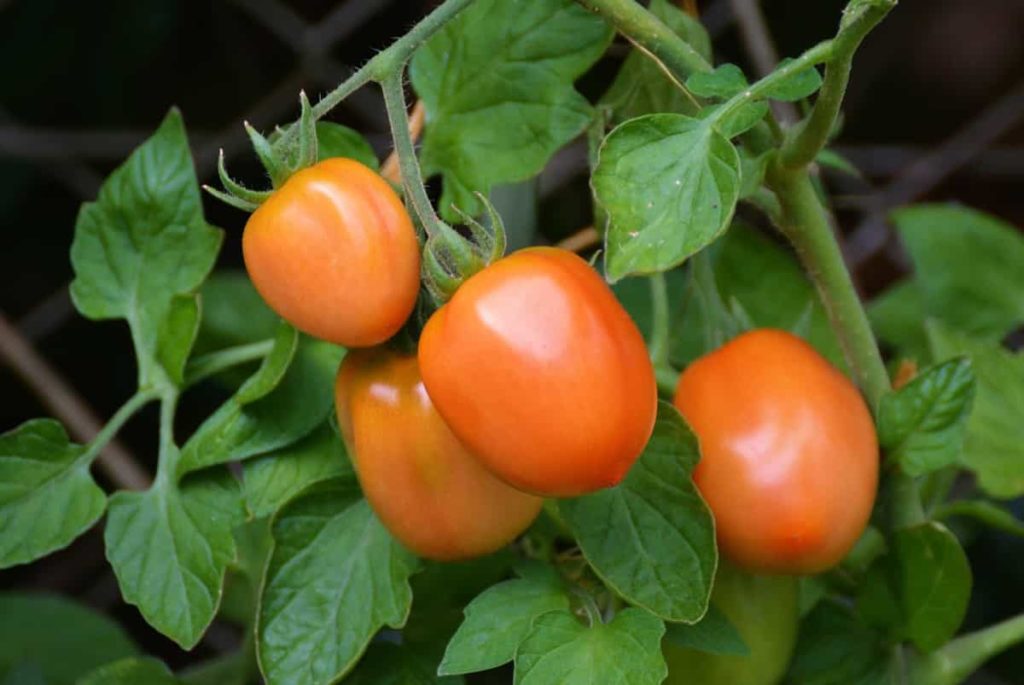
South Florida growing season for tomatoes
Plant tomato seedlings from August to September for fall tomatoes. Plant tomato seedlings from November to February for spring tomatoes.
- Flower Garden Designs and Layouts for Beginners
- Planting and Spacing Techniques in Papaya: A Beginner’s Guide
- Growing Gold: Essential Techniques for Planting Pineapples
- How to Make Kalanchoe Plant Bushy: Home Remedies and Solutions
- 11 Reasons Why Your Gardenia is Not Blooming: Home Remedies and Solutions
- Eco Elegance: The Guide to Designing a Drought-Tolerant Landscape
- Gardening on a Slope: Strategies for Hillside Landscaping
- Nourish and Flourish: Top Organic Mulches for Thriving House Plants
- Everything You Want to Know about Indian Mogra Flower: Discover Uses and Growing
- Green Thumb Success: Expert Tips for Cultivating Greenhouse Pumpkins All Year Round
- Maximize Growth & Flavor: The Ultimate Guide to Companion Planting in Herb Gardens
- How to Control Rhododendron Problems Naturally: Home Remedies and Organic Ways to Fix Them
- Natural Magic: The Remarkable Benefits of Cinnamon for Plants
- Best Steps to Revive Dying Tulip with Natural and Organic Treatment
- 10 Reasons Why Your Angel Trumpet is Not Blooming: Remedies and Treatment
- How to Fix Periwinkle Leaf and Flower-Related Problems: Natural Remedies and Solutions
- How to Fix Zinnias Leaf and Flower Problems: Discover Natural and Home Remedies
- Organic Steps to Induce Lemon Tree Flowers: A Comprehensive Guide
- Bloom Booster: Crafting the Perfect Homemade Bougainvillea Fertilizer
- Optimizing Growth: A Guide to Applying NPK Fertilizer for Potted Plants
- 10 Best Homemade Fertilizers for Rubber Plant: DIY Recipes and Application Method
- How to Boost Female Pumpkin Flowers: Effective Steps for More Flowers and High Yields
- Transform Your Indoor Garden: Top Benefits of Pink Salt for Houseplants
- 10 Best Homemade Fertilizers for Peacock Plants (Calathea): Easy DIY Guide
- Unlock Blooms: 9 Reasons Why Your Potted Chrysanthemum is Not Blooming
- 8 Reasons Why Your Potted Hibiscus is Not Blooming: Fix it with Simple Solutions
- Unlock Blooms: 9 Key Reasons Your Potted Frangipani Won’t Flower
- 10 Reasons Why Is My Ice Plant Not Blooming: Remedies and Treatment
- 10 Reasons Why My Potted Hydrangea Not Blooming: Treatment and Remedies
- 10 Reasons Why is My Wisteria Not Blooming: Remedies and Treatment
- 10 Reasons Why is My Goldfish Plant Not Blooming: Remedies and Treatment
- Maximize Your Space: Ultimate Guide to Balcony Gardening with Grow Bags
- 10 Reasons Why Your Iris is Not Blooming: Remedies and Treatment
- 10 Reasons Why Your Anthurium Plant is Not Blooming: Treatment and Remedies
- 10 Reasons Why Your Aquaponic Plants Are Not Flowering: Remedies and Treatment
- 10 Reasons Why Your Agapanthus is Not Flowering: Remedies and Treatment